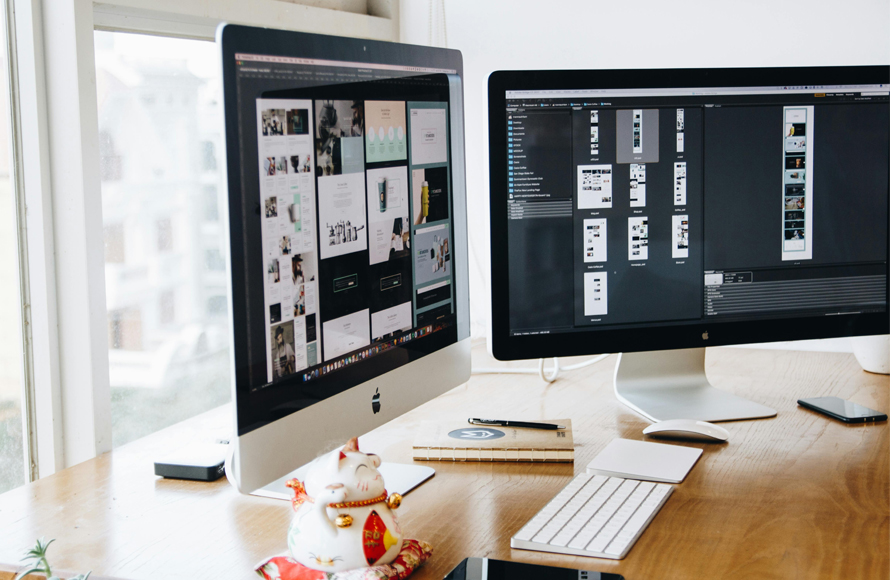Freelancing can be a great career option due to the flexibility it provides. Yet perhaps more enticing is the income potential it has to offer—especially if you specialise in more in-demand roles like design. Creative jobs that require digital skills, like graphic design and web design, are the most requested and highest-paid in the UK. That’s especially true among the country’s SMEs: 22% of them are more likely to hire these designers and offer them better compensation.
However, achieving success as a freelance designer doesn’t happen overnight. To get the most out of this career, you also need to strategically market yourself, set your contract rates, and wow clients to continuously nab lucrative projects. In today’s competitive gig economy, using digital tools like Upwork to find jobs, Slack to communicate, Trello for project management, and Figma for dedicated creative tasks can help you stay on top of your work and further establish yourself as a more reliable hire.
To use all these resources, however, you need a stable internet connection, and not all internet service providers (ISPs) offer that. Many still use outdated traditional copper telephone lines, which won’t give you the functionalities you need to work seamlessly. That arguably makes the more modern full fibre broadband connection the most important tool for freelance designers. Here’s why:
Speed
Traditional copper wires transmit data using electrical signals, making them vulnerable to electromagnetic interference that can cause lags in your internet speed. The fact that these signals weaken the farther they go can exacerbate that effect, especially since your ISP likely uses copper cables to connect you to the internet via street cabinet. In comparison, full fibre uses fibre optic cables that transmit data with light pulses. These work faster than electric signals and won’t weaken with distance. Such cables also link your workspace directly to your ISP, resulting in much faster internet and symmetrical upload and download speeds.
The reason why that can be vital for freelance design is that it can streamline the process of uploading and downloading the large files you need for work, facilitating faster turnaround for projects and seamless submissions to clients. This broadband connection can also be helpful for marketing your services via online video-sharing platforms like YouTube and TikTok, as you’ll need to upload high-quality videos to attract potential clients—and, if you’re using the latter, you have to do so quickly if you want your content to benefit from trend-seeking algorithms.
Reliability

Another issue with copper wire connections is that they can easily corrode. That puts you at risk of frequent internet outages, especially given how rainy it can get in the UK. Since they’re made of glass, fibre optic cables are more weather-proof and won’t degrade so easily. In fact, they can last for up to 40 years compared to the copper cable’s five. This means full fibre broadband provides a more reliable option for completing freelance design projects. By leveraging fibre optic cables, it guarantees continuous access to faster and more symmetrical upload and download speeds, even in bad weather. You won’t experience service interruptions that cause you to lose files and potentially miss deadlines, an outcome that can significantly impact your standing as a freelance designer.
Security

As a freelance designer, you’ll be doing most of your work through the internet, whether you’re hunting for new clients, communicating with them, or completing finished projects. That means you’ll be creating multiple online accounts just to sign up for work-related services. Many of these often require your email address to log in. Since that address likely stores your personal information, that puts you at a higher risk of falling victim to fraud—which makes up over 40% of all offences committed in England and Wales. Crimes like this can lead to financial losses that can significantly take away from your earnings in this position.
You’re even more vulnerable if you use an ISP that leverages copper wires, because the same electromagnetic interference that causes slow internet speeds here also leads to something called ‘cross-talk.’ That basically means that cybercriminals can more easily intercept the data transmitted through copper cables. Full fibre connections can provide more security and peace of mind, as the light pulses their cables use travel too quickly for hackers to pick up any data.
Future-proofing

Keeping your copper connection can cost you in the long run and cause service interruptions that negatively affect your short-term productivity. The copper cable’s short lifespan plays into this, as it will require frequent upkeep and maintenance. The government is also investing significant amounts of money to establish full fibre coverage across the country given how vital it is for facilitating new 5G connections. You might be required to make the switch down the line, which may see you spending more time and money to install full fibre than necessary. Transitioning now while demand is low can be a cost-effective way to future-proof your workflows in freelance design without experiencing service interruptions, which can be especially helpful for facilitating smooth task completion if you want to pursue this career in the long term.
Full fibre broadband is arguably the most important tool for freelance designers given the speed, reliability, security, and sustainability it provides. Keep browsing here on Graphic Design Junction for more useful insights and resources!
(Visited 18 times, 11 visits today)

